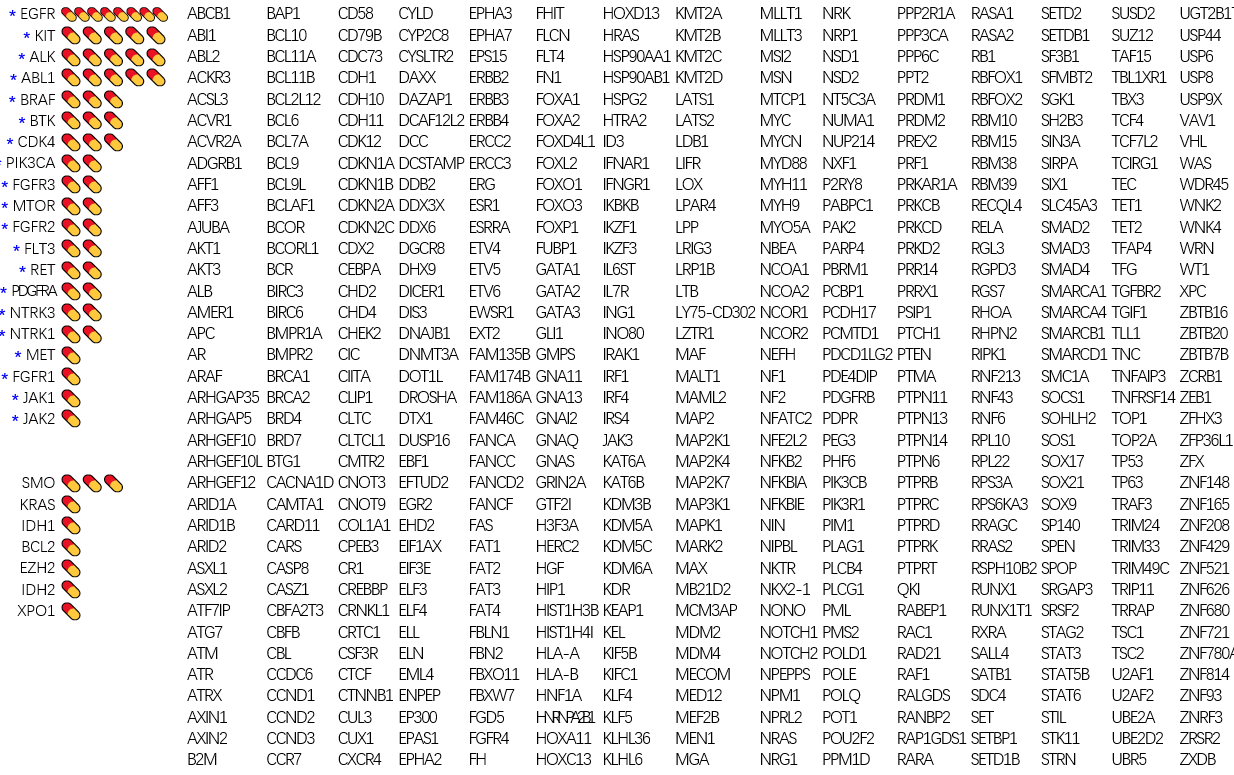Background: Among the 568 established therapeutical anticancer targets (Martinez-Jimenez, Nat Rev Can, 2020, 20, 555-572), a small number of them are overlappingly drugged (29/568; ~5%) whereas the vast majority of them remain “undruggable” (539/569; ~95%; the below figure). Mechanistically, the most of the drugged targets are kinases because they have a deep and narrow pocket for small molecules to tightly bind; unfortunately, the most of the therapeutical targets are “smooth”, lacking a pocket for small molecules to tightly bind, making them considered as “undruggable”.
Aim: Develop a technique to pharmacologically target proteins that lack of pocket, by which drugging numerous smooth proteins such as p53, KRAS-G12D, and myc.

Figure legend: the list of the 568 established therapeutical anticancer targets (Martinez-Jimenez, Nat Rev Can, 2020, 20, 555-572). Pill icons, the approved small-molecule targeted drugs. Blue asterisks, the drugged targets that are kinases.

